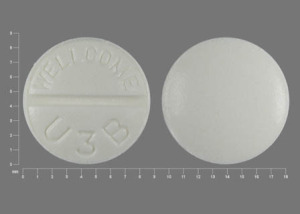Tabloid and Alcohol/Food Interactions
There is 1 alcohol/food/lifestyle interaction with Tabloid (thioguanine).
Thioguanine Alcohol (Ethanol)
Moderate Drug Interaction
MONITOR: The concomitant or sequential use of other agents known to induce hepatotoxicity may potentiate the risk of liver injury associated with thioguanine. A high risk of liver toxicity characterized by vascular endothelial damage has been reported with long-term continuous use of thioguanine, particularly in children receiving the drug as part of maintenance therapy for acute lymphoblastic leukemia and in other conditions associated with continuous use. Liver toxicity usually presents as the clinical syndrome of hepatic veno-occlusive disease (hyperbilirubinemia, tender hepatomegaly, weight gain due to fluid retention, and ascites) or with signs of portal hypertension (splenomegaly, thrombocytopenia, and esophageal varices). Histopathological features include hepatoportal sclerosis, nodular regenerative hyperplasia, peliosis hepatitis, and periportal fibrosis.
MANAGEMENT: The risk of hepatic injury should be considered when thioguanine is used with other potentially hepatotoxic agents (e.g., acetaminophen; alcohol; androgens and anabolic steroids; antituberculous agents; azole antifungal agents; ACE inhibitors; cyclosporine (high dosages); disulfiram; endothelin receptor antagonists; interferons; ketolide and macrolide antibiotics; kinase inhibitors; minocycline; nonsteroidal anti-inflammatory agents; nucleoside reverse transcriptase inhibitors; proteasome inhibitors; retinoids; sulfonamides; tamoxifen; thiazolidinediones; tolvaptan; vincristine; zileuton; anticonvulsants such as carbamazepine, hydantoins, felbamate, and valproic acid; lipid-lowering medications such as fenofibrate, lomitapide, mipomersen, niacin, and statins; herbals and nutritional supplements such as black cohosh, chaparral, comfrey, DHEA, kava, pennyroyal oil, and red yeast rice). Patients should be advised to seek medical attention if they experience potential signs and symptoms of hepatotoxicity such as fever, rash, itching, anorexia, nausea, vomiting, fatigue, malaise, right upper quadrant pain, dark urine, pale stools, and jaundice. Baseline and regular monitoring of hepatic function is recommended. Thioguanine therapy should be discontinued if there is evidence of toxic hepatitis or biliary stasis, as reversal of signs and symptoms of liver toxicity have been reported upon withdrawal. Early indications of liver toxicity are signs associated with portal hypertension such as thrombocytopenia out of proportion with neutropenia and splenomegaly. Elevations of liver enzymes have also been reported, but do not always occur.
References (2)
- (2001) "Product Information. Tabloid (thioguanine)." Prasco Laboratories
- (2012) "Product Information. Aubagio (teriflunomide)." Genzyme Corporation
Switch to consumer interaction data
Tabloid drug interactions
There are 537 drug interactions with Tabloid (thioguanine).
Tabloid disease interactions
There are 4 disease interactions with Tabloid (thioguanine) which include:
More about Tabloid (thioguanine)
- Tabloid consumer information
- Check interactions
- Compare alternatives
- Pricing & coupons
- Drug images
- Latest FDA alerts (1)
- Side effects
- Dosage information
- During pregnancy
- Drug class: antimetabolites
- Breastfeeding
- En español
Related treatment guides
Drug Interaction Classification
| Highly clinically significant. Avoid combinations; the risk of the interaction outweighs the benefit. | |
| Moderately clinically significant. Usually avoid combinations; use it only under special circumstances. | |
| Minimally clinically significant. Minimize risk; assess risk and consider an alternative drug, take steps to circumvent the interaction risk and/or institute a monitoring plan. | |
| No interaction information available. |
See also:
Further information
Always consult your healthcare provider to ensure the information displayed on this page applies to your personal circumstances.


